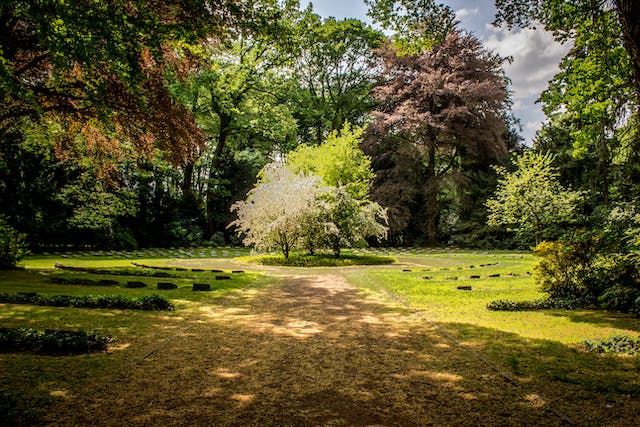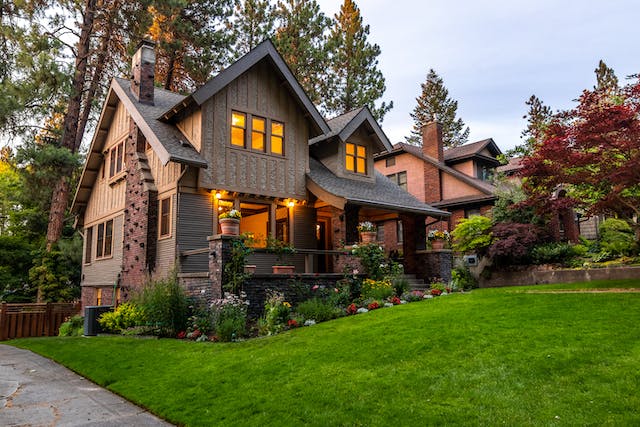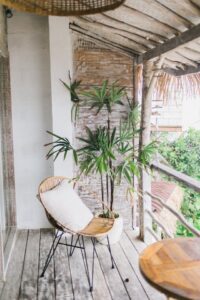The world of gardening hides behind it many secrets and much knowledge that is only obtained with experience. Still, in general terms, the most common thing is that there is always some reasoned answer to the questions that a person may have in relation to this exciting and vast world of gardening. The purpose of providing this information is that each person dares without fear to start once and for all to start having a garden in their home.
Plants in the Bedroom
This is probably the most popular dilemma that exists in relation to plants in the home: can we have plants in our bedrooms? The reality is that the O2 consumption of plants is practically zero, so it is not taken into account when determining whether or not to place a certain plant in the room. What is taken into account is the health of the person who will reside in that bedroom. For example, people with breathing difficulties should be very careful with the choice of plants since their smell can cause problems during the night.

Air Conditioning Water To Water Plants
Another of the most common doubts regarding watering plants is whether the water that comes out of the air conditioning can be used for this task. The answer is a resounding “yes” since the water expelled by air conditioners is normally distilled and therefore much purer, thus being more beneficial for the care of the plant.

Vinegar As A Substitute For Citric Acid
Vinegar is much cheaper than citric acid, and the vast majority of gardening experts agree that it can be used without problems as a substitute for citric acid. Its function is to acidify the water for acidophilic plants that require it.

Learn How To Save Your Plants.
Sometimes, we believe that there is no remedy when we leave our plants without care for a long time, and the truth is that obviously, the plants cannot be left without water for a long time, so we must devise some way to guarantee that the water reaches them when no one is home. There are two ways to do it: the home method, which consists of using a 25/50 liter container with an irrigation programmer, and the professional method, which consists of purchasing a drip irrigation kit that already comes pre-installed and ready to use.
Plants in the Bedroom
Having a garden at home can not only provide us with economic benefits in the form of savings, but it will also provide psychological benefits to our sons or daughters. Below, we share some with you.
Have a garden at home:

Promotes Awareness About Life
Your son or daughter will realize that the plant requires care, attention, waiting times, development, and a process to finally provide a final result (flower, vegetable, fruit).

Promote Diversity
Your daughter or son will notice that each plant requires different care. Furthermore, the growth and result will vary depending on the plant, but all will be equally valuable and beautiful.

Promotes Responsibility For The Care Of A Living Being
To take care of the garden, your son or daughter must organize, plan, and execute tasks daily.
Promotes love of the environment. By taking care of the garden or a plant, your son or daughter will generate a bond and will be able to realize the value of the environment (animals and plants).
Encourage patience. Your daughter or son will learn to wait for the result while she observes the different processes and stages of the plant. Perhaps she will experience frustration when she sees that not everything turns out right the first time. But life itself is like that, and this experience will help you understand it better.
 It is undeniable that the well-known green panels add beauty and freshness to interiors, which is why this decoration has become so common in the world of hospitality. However, little by little, vertical gardens have found a space in our homes. If you want to be part of this new trend, this time, we will teach you how to build your vertical garden at home.
It is undeniable that the well-known green panels add beauty and freshness to interiors, which is why this decoration has become so common in the world of hospitality. However, little by little, vertical gardens have found a space in our homes. If you want to be part of this new trend, this time, we will teach you how to build your vertical garden at home. Before proceeding to build your long-awaited green wall, the ideal is that you know some tricks to keep it in perfect condition. Remember that this is still a garden, so you will need to keep it well cared for so that your plants grow healthy, although some species or designs may have different needs.
Before proceeding to build your long-awaited green wall, the ideal is that you know some tricks to keep it in perfect condition. Remember that this is still a garden, so you will need to keep it well cared for so that your plants grow healthy, although some species or designs may have different needs. Caring for plants, whether indoor or outdoor, is much more than a household chore. Psychologists and experts assure that it is a therapeutic activity capable of promoting relaxation, reducing stress, and improving self-esteem. Benefits that could have led, along with the growing need to feel closer to nature, to the success of indoor plants, which this spring are moving to terraces, gardens and balconies.
Caring for plants, whether indoor or outdoor, is much more than a household chore. Psychologists and experts assure that it is a therapeutic activity capable of promoting relaxation, reducing stress, and improving self-esteem. Benefits that could have led, along with the growing need to feel closer to nature, to the success of indoor plants, which this spring are moving to terraces, gardens and balconies. Most plants are pruned in late winter or early spring. During these seasons, your pruning tools are working diligently to help you cut your roses, evergreens, and shrubs with ease.
Most plants are pruned in late winter or early spring. During these seasons, your pruning tools are working diligently to help you cut your roses, evergreens, and shrubs with ease.
